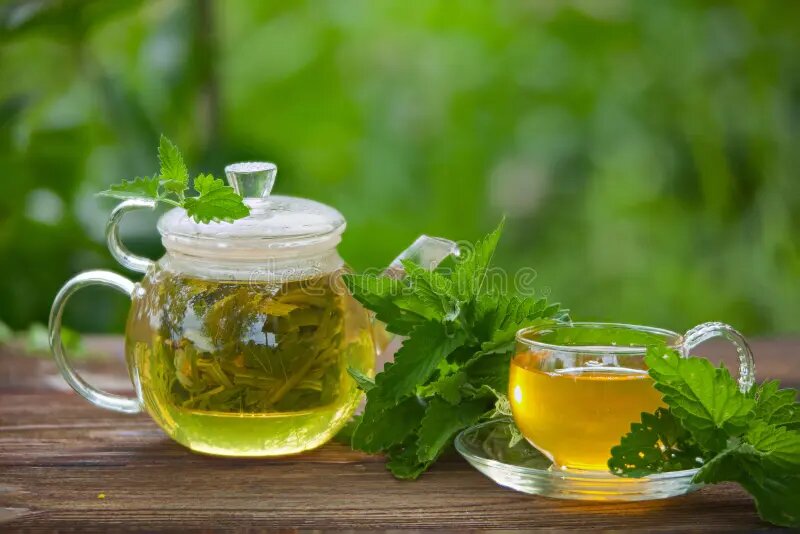How to Make Catnip Tea for Humans: Benefits and Recipes

Are you feeling the pressures of everyday life weighing you down? Do you find yourself yearning for a little escape, a moment of tranquility amidst the chaos?
Or perhaps you’re simply a tea enthusiast, looking to broaden your horizons in the diverse world of herbal infusions. Whichever category you fall into, we have the perfect solution for you – catnip tea.
Setting Foot in the World of Catnip Tea
Immerse yourself in the realm of catnip tea, an experience that transcends a typical herbal infusion. This well-loved beverage has captured the hearts of tea enthusiasts worldwide, promising a soothing experience unlike any other. From its intriguing origins to its array of health benefits, catnip tea is truly a treasure trove of flavors and wellness offerings.
As we embark on this journey, you’ll not only become familiar with this unique herbal tea, but also gain insight into its significance and potential to elevate your daily tea rituals. So, shall we dive in?
The Magic Ingredient: Catnip
The journey of making a tantalizing cup of catnip tea begins with understanding its star ingredient: Catnip.
What is Catnip? Well, catnip, scientifically known as Nepeta cataria, is a perennial herb belonging to the mint family. It is native to Europe, but has made its way around the globe over centuries. Catnip boasts beautiful, lavender-colored flowers and distinct, heart-shaped leaves. Though famously known for its euphoric effect on our feline friends, catnip holds a treasure trove of benefits for humans too.
The Nutritional Profile of Catnip: Catnip leaves are rich in essential oils like nepetalactone, which is responsible for the herb’s unique aroma. The leaves also contain beneficial compounds like tannins, flavonoids, and terpenoids. It’s packed with vitamins A, C, and K, along with minerals like magnesium, iron, and manganese. These nutrients make catnip a magical herb, perfect for a soothing cup of tea.
The History of Catnip Tea
The tale of catnip tea stretches back centuries, with its roots nestled in the heartlands of the Mediterranean and Eastern Europe. Known scientifically as Nepeta cataria, catnip was valued for its multifaceted uses, which encompassed medicinal, recreational, and culinary applications.
As ancient explorers and traders embarked on their global voyages, they brought with them this versatile herb, introducing catnip to different corners of the world, where it was quickly adopted and incorporated into various cultures.
The Health Benefits of Catnip Tea
Now that we’ve journeyed through the captivating past of catnip tea, it’s time to shed light on what makes this humble herb a standout in the world of teas – its potent health benefits:
- A Sanctuary of Relaxation: Known for its calming attributes, catnip tea offers a tranquil retreat for those wishing to unwind and decompress. Its mild sedative qualities can effectively mitigate anxiety and stress, promoting an overall sense of wellbeing.
- A Digestive Aid: By stimulating digestion, catnip tea serves as a gentle remedy for gastrointestinal discomfort, easing upset stomachs and promoting regular bowel movements.
- A Sleep Enhancer: Are restless nights a common occurrence for you, or are you simply in pursuit of a more restful sleep? Catnip tea could be your ticket to dreamland, thanks to its relaxing properties that contribute to better sleep patterns.
- A Refreshing Delight: Beyond its health-centric features, catnip tea also offers an indulgent sensory experience. Its distinctive flavor, an intricate blend of mild mint and a hint of sweetness, culminates in a truly enjoyable and refreshing cup of tea.
Now, with our magic ingredient unveiled, let’s move onto the heart of our post: the brewing process!
Learn about What is arnica tea good for?.
The Step-by-Step Guide to Make Catnip Tea for Humans
Here’s where the real magic happens. Are you ready to learn how to concoct your soothing catnip tea? Let’s dive in.
Ingredients:
- Fresh catnip leaves: 2 tablespoons (you can also use dried leaves if fresh ones are unavailable)
- Boiling water: 1 cup
- Optional: honey or any sweetener of your choice
Instructions:
- Place the fresh catnip leaves in a teapot or cup.
- Pour boiling water over the leaves.
- Let it steep for about 5-10 minutes. The longer it steeps, the stronger the flavor.
- Strain the tea into your favorite tea cup.
- Add honey or a sweetener of your choice, if desired.
There you go, a warm cup of catnip tea is ready for you to savor.
But what if you want to jazz up your regular catnip tea? Let’s look at some creative variations.
Add a Twist: Creative Variations of Catnip Tea
Drinking catnip tea in its purest form is indeed a delight. But, adding a twist to your regular catnip tea can elevate your tea-drinking experience to another level.
Honey and Lemon Catnip Tea: Add a teaspoon of honey and a squeeze of fresh lemon juice to your catnip tea. This variation not only sweetens your tea but also adds a refreshing citrusy kick.
Catnip and Chamomile Tea: Blend in equal parts of chamomile flowers with catnip leaves. Chamomile’s calming effects, combined with the soothing properties of catnip, make for a relaxing brew.
Catnip and Mint Tea: Add a few fresh mint leaves to your catnip tea. This will give your tea a cool, refreshing edge.
Spiced Catnip Tea: Spice up your tea by adding a few cloves, a dash of cinnamon, or a sprinkle of nutmeg. These spices add warmth and complexity to the flavor of your catnip tea.
Storing Your Catnip Tea: Keeping It Fresh and Flavorful
Now that we’ve covered the serving aspect, let’s dive into the storage part. Whether you’ve made a little extra catnip tea or you’ve got some dried catnip leaves left over, proper storage is key to maintaining its freshness and flavor.
For brewed catnip tea:
- Refrigerate it: Brewed tea can be stored in the refrigerator for up to 2 days. Make sure to store it in a sealed container to avoid absorbing other odors.
- Avoid reheating: Reheating your tea may cause it to lose some of its beneficial properties and flavor. Instead, enjoy it cold or at room temperature.
For dried catnip leaves:
- Airtight containers: Store dried catnip in an airtight container to keep out moisture and preserve its potent aroma and properties.
- Cool, dark place: Keep the container in a cool, dark place like a pantry or cupboard. Direct sunlight or heat can degrade the quality of the dried leaves.
Remember, the better you store your catnip, the more enjoyable your tea will be, making each cup a soothing experience of its own.
Conclusion: Your Journey into the World of Catnip Tea
We’ve navigated through the history, health benefits, brewing process, serving and storage of catnip tea. Now, it’s time to put all this knowledge into practice.
By now, you understand the joys and benefits of catnip tea and are equipped with the recipe to brew it at home. Whether you’re a tea enthusiast, an herbal remedy lover, or just someone looking for a refreshing, calming beverage, catnip tea has something to offer.



